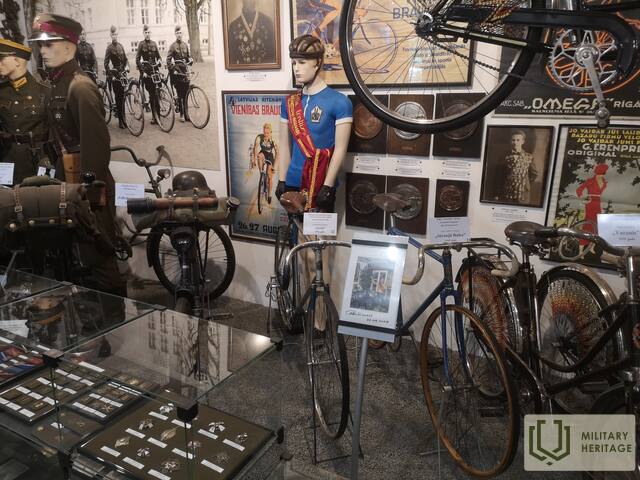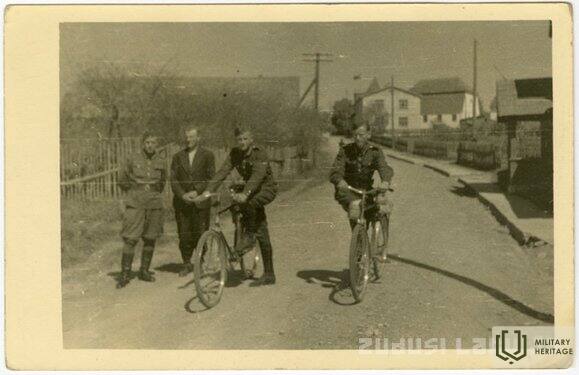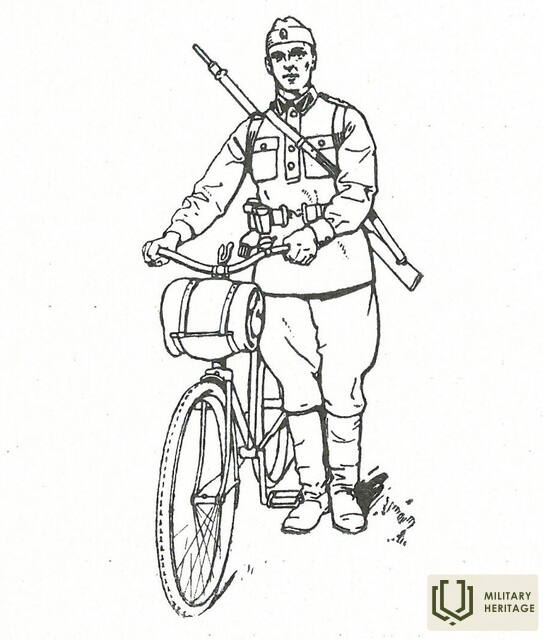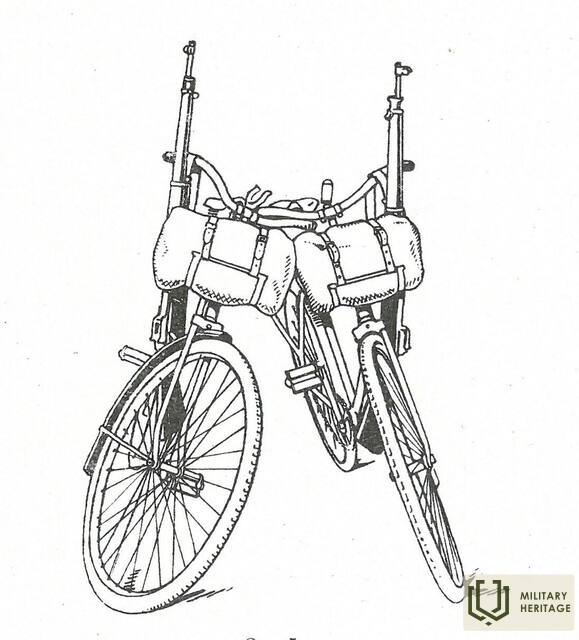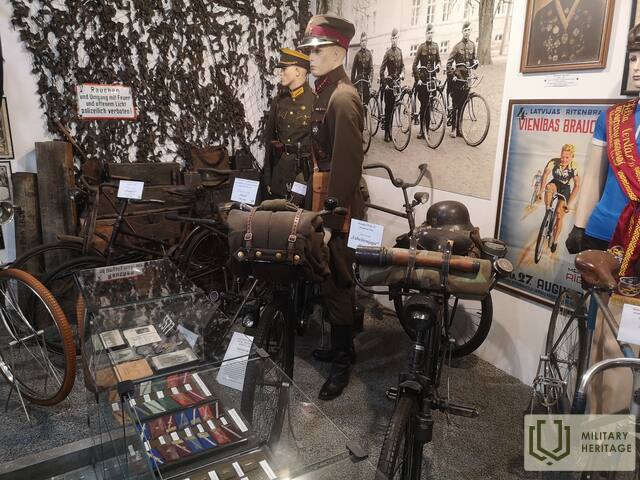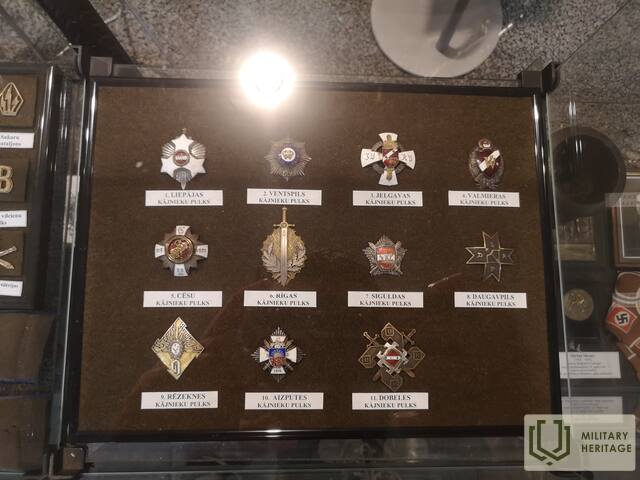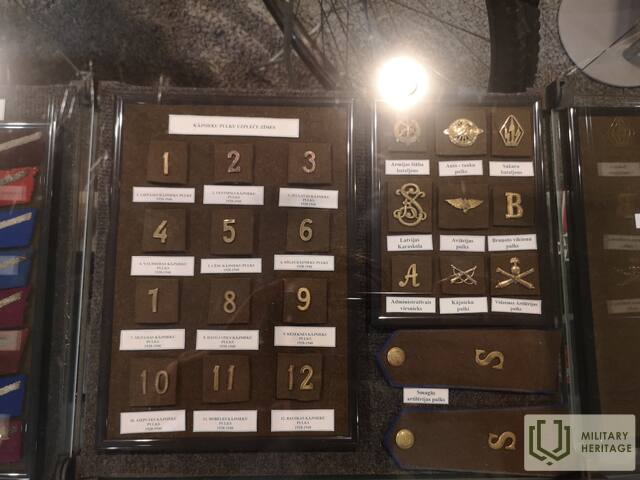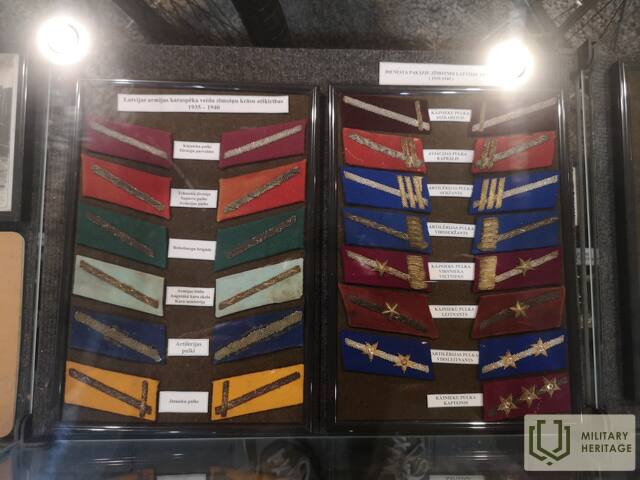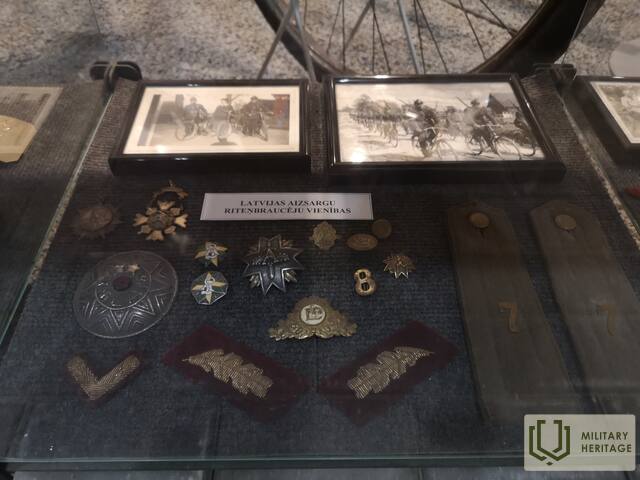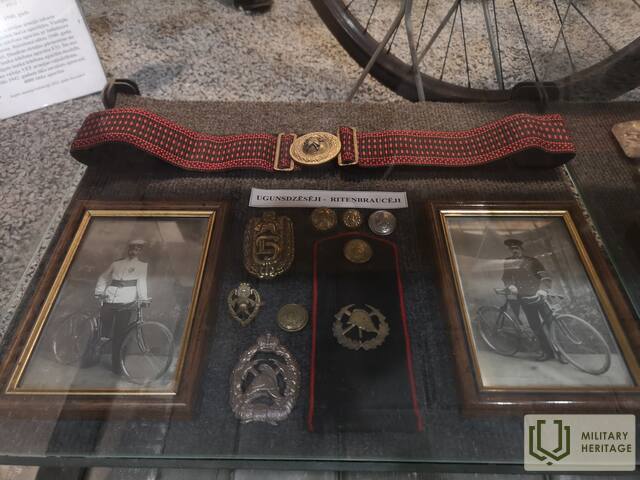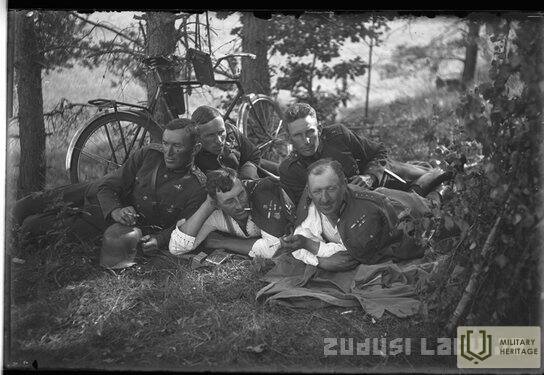Exposition of military bikes in the Bicycle museum in Saulkrasti
Museum

The Bicycle Museum is located in Saulkrasti not far from the A1 highway and the railway station Pabaži, near the White Dune. Museum’s collection is made up of technically the most interesting examples of bicycle development history in Latvia. It is the largest bicycle collection in the Baltics with about 60 bicycles made and used in Latvia, including army-type bicycles. In the beginning of the 20th century many armies started to widely utilise the availability and benefits of bicycles. Special bicycle units were formed because of their mobility. Bicycle units were able to gather intelligence and launch unexpected attacks more easily, and were more mobile than regular infantry when it came to operations over a wide area. After World War I the Latvian Army also had bicycle units who used Latvian-made army bicycles. Any soldier who was in such a bicycle unit had to meet strict requirements. Good stamina, eyesight and hearing, as well as a healthy heart and lungs were a must. They could not weigh less than 80 kg and their height had to be 165-180 cm. The standard in the Latvian Army was that a well-trained cyclist should be able to cover 80-100 km in day, and up to 150 km in forced conditions. In winter, when bicycles could not be used, skis were used. A soldier from a bicycle unit had to be able to ski 50-60 km per day. Many soldiers from bicycle units would later become professional athletes.
We have about 5000 visitors every year.
Used sources and references:
Cyclist Training Regulations. Riga: Army Headquarters Training Department, 1940.
Sapratnieks, T. The development and future use of bicycle units. Military Review, No. 7, 1935.
V, K. Cyclist. Cadet, No. 6/7. 1939.
Educational programs
Excursion to the Saulkrasti Bicycle Museum
The largest collection of bicycles in the Baltics can be seen in the museum. In total, the museum houses about 60 bicycles made and used in Latvia, including army model bicycles. The bicycle museum in Saulkrasti attracts visitors with its ancient atmosphere and interesting collection. The bicycle collection of father and son Jānis and Guntas Seregins has become a unique witness of history. One of the first high-speed bicycles, a bicycle with the first inflatable tires and even a wooden bicycle can be seen in the museum. The collection has a wide range of things related to the use of two wheels, the sport of cycling, associations and the manufacture of bicycles. In addition, the collection is constantly updated. Guided visit to the museum with an engaging narration.
Related timeline
Related stories
Special advice on health care for cyclists
The recommendations mentioned in the cyclist training regulations are intended for the training of cyclists in the Latvian Army. The recommendations are focused primarily on soldier health issues.




